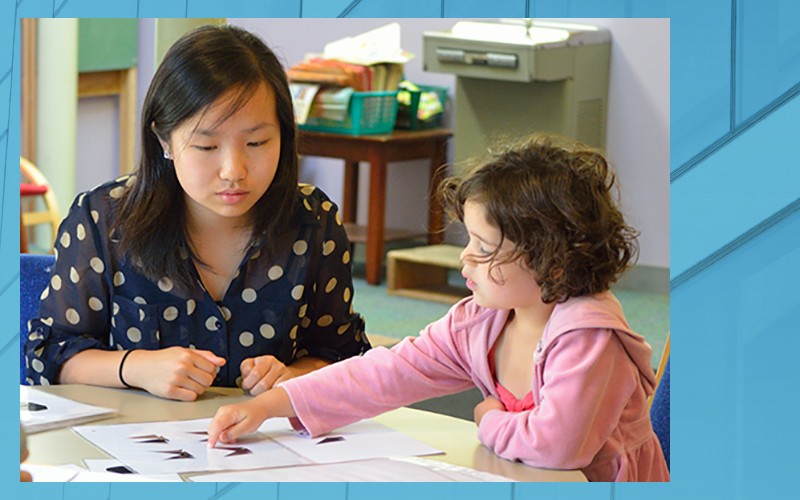Spatial language promotes children's spatial thinking, linked to math achievement

Using spatial language when playing with young children helps them to better visualize three-dimensional images, a skill that has been linked to math achievement, according to a study published earlier this year by Human Development Professor Marianella Casasola.
The research is notable not only because it provides evidence about how play with young children can influence their development, but also because Casasola’s research partners and co-authors on the paper were Cornell undergraduate students.
Wendy S. Wei HD ‘15 and Daniel D. Suh HBHS ‘14 worked in Casasola’s laboratory from 2013 to 2015, where they helped to develop and conduct the study. And Patricia Donskoy, CALS ‘16 led a team that replicated the study at a Head Start Center in New York City as part of a Cornell Cooperative Extension summer internship. Since then, Wei has gone on to work on her doctorate degree at Harvard Graduate School of Education and Suh is working on a doctorate degree in developmental psychology at New York University Steinhardt.
“They are authors on the paper for a reason,” Casasola said. “They were true collaborators. They helped design the study from the start. These opportunities clearly helped shape their experiences, but they also helped shape the research and ultimately made it better; I’m grateful for that.”
To better understand how children learn spatial skills, Casasola and her research assistants played with 4-year-olds enrolled at Ithaca-area preschools. First, they measured the children’s spatial skills and their ability to use spatial language. Then, they played with each preschool child, one-on-one. For half of the children, researchers used specific spatial language while playing such as “vertical line” and “triangle.” With the other half, they used more generic language such as “this part” or “over there.” Researchers then returned to the preschools several days later to test the children again on their spatial skills and use of spatial language.
“The question was, are there any long-lasting effects to using this type of language during play?” Casasola said. “We found the kids who heard more spatial language scored significantly higher on the spatial task, a measure of mental rotation, which is a key predictor of math skills and math achievement.
“What we learned is that it’s really important to use this kind of specific language when you’re playing with kids, even for just a little bit of time,” she said. “It doesn’t take a lot of spatial language input to make a difference.”
For Wei, playing such a large role in this study as an undergrad is what put her on the path to pursuing a doctorate degree, she said.
“Prior to joining the lab, I never thought I'd pursue research as a career,” she said. “Participating in this research exposed me to a breadth of experiences, such as recruiting participants and sites, developing measures, supervising other research assistants, presenting my work in conferences and manuscript writing.
“One of the main things that captivated me was the opportunity to apply this research to education practice, specifically in ways that could be used to promote education equity,” she said. “Through this research, I knew I wanted to be doing work that could be used in policy and practice that could reduce inequity in the education system.”
The study was funded by the Milman Fellowship Program at the Bronfenbrenner Center for Translational Research, which helps fulfill the BCTR mission to expand, strengthen, and speed the connections between cutting-edge research and human development and well-being.